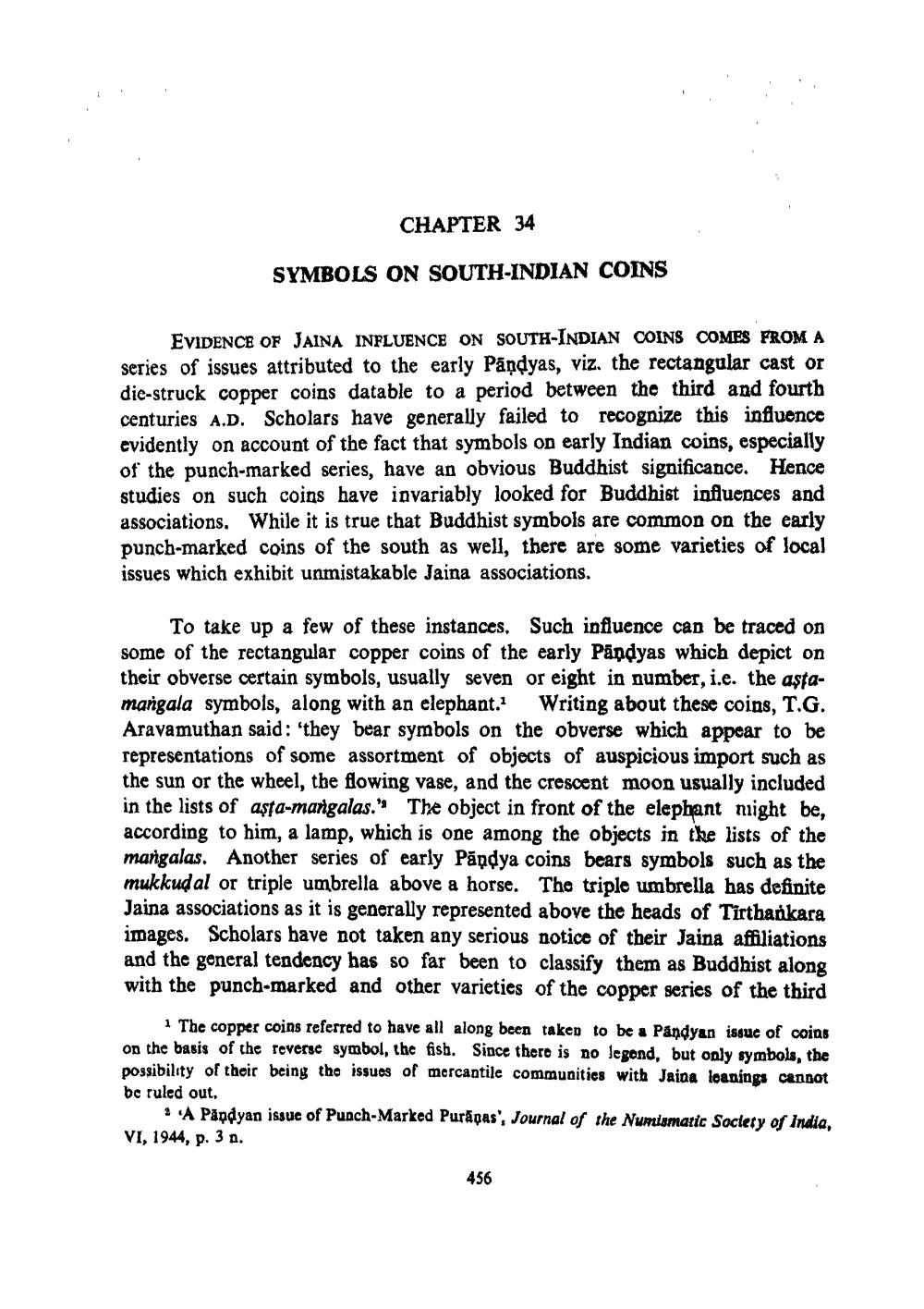________________
CHAPTER 34 SYMBOLS ON SOUTH-INDIAN COINS
EVIDENCE OF JAINA INFLUENCE ON SOUTH INDIAN COINS COMES FROM A series of issues attributed to the early Pandyas, viz. the rectangular cast or die-struck copper coins datable to a period between the third and fourth centuries A.D. Scholars have generally failed to recognize this influence evidently on account of the fact that symbols on early Indian coins, especially of the punch-marked series, have an obvious Buddhist significance. Hence studies on such coins have invariably looked for Buddhist influences and associations. While it is true that Buddhist symbols are common on the early punch-marked coins of the south as well, there are some varieties of local issues which exhibit unmistakable Jaina associations.
To take up a few of these instances. Such influence can be traced on some of the rectangular copper coins of the early Pandyas which depict on their obverse certain symbols, usually seven or eight in number, i.e. the astamangala symbols, along with an elephant. Writing about these coins, T.G. Aravamuthan said: 'they bear symbols on the obverse which appear to be representations of some assortment of objects of auspicious import such as the sun or the wheel, the flowing vase, and the crescent moon usually included in the lists of așța-mangalas.' The object in front of the elephant might be, according to him, a lamp, which is one among the objects in the lists of the mangalas. Another series of early Pěndya coins bears symbols such as the mukkud al or triple umbrella above a horse. The triple umbrella has definite Jaina associations as it is generally represented above the heads of Tirthankara images. Scholars have not taken any serious notice of their Jaina affiliations and the general tendency has so far been to classify them as Buddhist along with the punch-marked and other varieties of the copper series of the third
The copper coins referred to have all along been taken to be a Pandyan issue of coins on the basis of the reverse symbol, the fish. Since there is no legend, but only symbols, the possibility of their being the issues of mercantile communities with Jaina loanings cannot be ruled out.
A Pandyan issue of Punch-Marked Purapas', Journal of the Numismatic Society of India, VI, 1944, p. 3 a.
456




